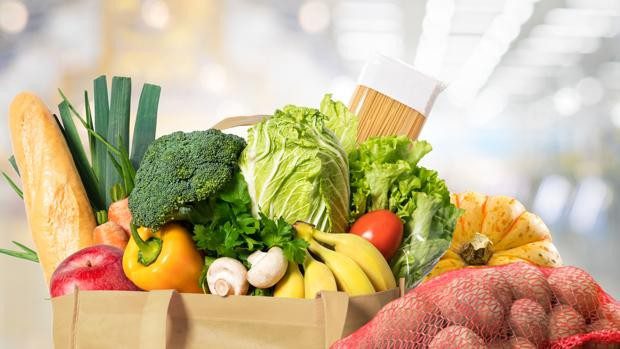Contents
Climate Diet: How to Shop and Eat to Reduce Waste
Healthy nutrition
Reducing the consumption of meat, and avoiding single-use plastics are two of the keys to reducing our negative impact on the planet

A “climatarian” diet does not have fixed foods: it adapts to each time of year and region of the planet. This happens because if we talk about this diet, more than a diet, we refer to a way of planning our life. «This diet would try to minimize our environmental impact through what is on our plate, of what we eat. In other words, curbing climate change by choosing only those foods that generate the smallest possible footprint “, explains María Negro, author of the book” Change the World “, a promoter on sustainability and founder of Consume con COCO.
For this reason, we cannot say that we follow a “climatarian” diet the same as we do with a vegetarian or vegan diet. On
In this case, they can be complementary, since in the “climatarian” diet, products of plant origin are given prominence. «On this diet vegetables, fruits, legumes and nuts predominate. It is not a unique type of diet, but it is adapted to the region where we live, to our culture and to the food available ”, reiterates Cristina Rodrigo, director of ProVeg Spain.
Generate the least possible impact
Although not necessarily to eat in a sustainable way we must follow a vegetarian or vegan diet, both types of diet do have a relationship. María Negro explains that, according to Greenpeace studies, more than 71% of agricultural land in the European Union is used to feed livestock. Therefore, he points out that “by drastically reducing our consumption of meat and animal protein we will be much more sustainable and efficient.” «We will save resources such as water, time, money, arable space and CO2 emissions; we will avoid the deforestation of natural reserves and contamination of the soil, air and water, as well as the sacrifice of millions of animals ”, he assures.
Cristina Rodrigo adds that a report by ProVeg, “Beyond meat”, shows that, if a 100% vegetable diet were adopted in Spain, “36% of water would be saved, 62% of soil would be emitted. 71% less kilograms of CO2 ». “Even by halving our consumption of animal products we could make a big contribution to the environment: we would save 17% water, 30% soil and emit 36% fewer kilograms of CO2,” he adds.
Avoid plastics and comment on the bulk
Beyond reducing meat consumption, there are other factors to take into account to make our diet as sustainable as possible. Cristina Rodrigo comments that it is important avoid the use of single-use plasticsas well as trying to buy in bulk. “It is also important to choose more fresh than processed products, because their impact is less when producing them and usually the packaging is less and it is easier to find them in bulk,” he explains. On the other hand, it is important to opt for local food. «You also have to include other small gestures in our shopping habits, like taking our own bags; This helps reduce our environmental footprint and reduce our waste, ”he says.
On the other hand, María Negro talks about the importance of organizing our shopping and meals well to avoid wasting food, an essential factor in the “climacteric” diet. “It will help us to make shopping lists to buy only what we need, organize our meals through weekly menus or practice batch cooking,” he says and adds: “We will also be more efficient and save energy by cooking food in one day of the whole week.
Eating healthy is eating sustainable
The relationship between healthy eating and “sustainable eating” is intrinsic. María Negro assures that when bet on more sustainable foods, that is, those of proximity, fresher, with less packaging, it is also usually healthier. Therefore, the foods that tend to do the most damage to our health are also the ones that have the greatest impact on the planet: ultra-processed foods, red meats, sugary foods, industrial pastries, etc. “Food is the most powerful engine to improve our health and protect the planet”, adds Cristina Rodrigo.
To finish, Patricia Ortega, ProVeg collaborating nutritionist, reiterates the close relationship that we find between food and sustainability. “Our type of food pattern interferes with both CO2 emissions, water consumption and land use. The proposal of a more sustainable food or “climatarian”, which is also healthy and meets our nutritional and energy requirements, must be based on foods of plant origin such as fruits, vegetables, quality fats (nuts, extra virgin olive oil, seeds, etc.) and legumes ” , summarize to conclude.










